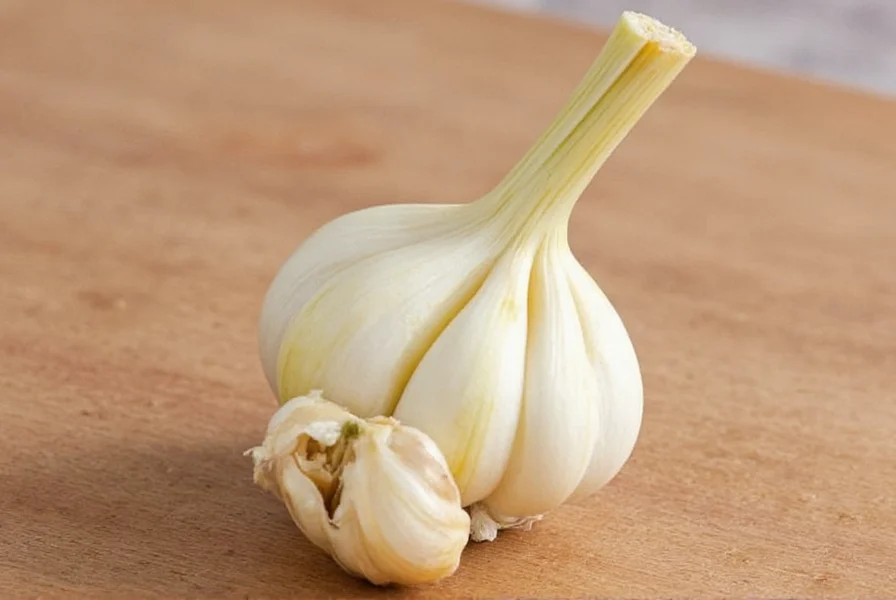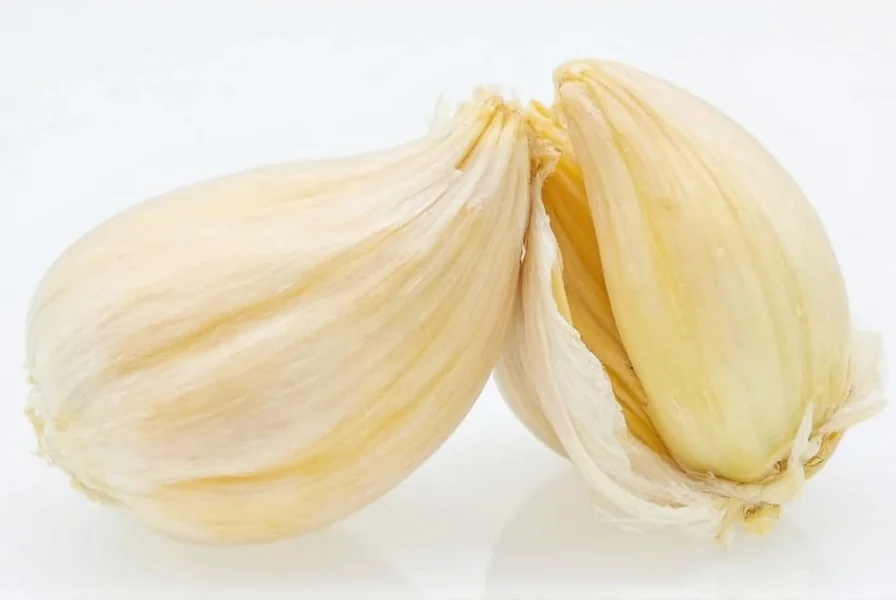Understanding garlic measurements is essential for precise recipe execution, especially when fresh garlic isn't available. This comprehensive guide explains the variables affecting garlic conversions and provides practical substitution guidelines for home cooks and professional chefs alike.
Factors Influencing Garlic Measurement Conversions
The exact teaspoon equivalent of a garlic clove depends on three critical factors:
- Clove size – Garlic bulbs contain cloves of varying dimensions, with larger varieties like elephant garlic producing substantially more volume
- Preparation method – Minced, pressed, or roasted garlic yields different volumes due to moisture content and cell structure changes
- Compaction – How tightly garlic is packed into the measuring spoon affects the final quantity
Professional chefs recommend measuring garlic after preparation rather than estimating by clove count for critical recipes. This garlic clove to teaspoon conversion knowledge becomes particularly valuable when scaling recipes or substituting preserved garlic products.
Garlic Measurement Conversion Reference
| Garlic Form | Equivalent to 1 Medium Clove | Notes |
|---|---|---|
| Minced fresh garlic | 1⁄2 teaspoon | Most common preparation method |
| Garlic paste | 1⁄4 teaspoon | More concentrated flavor |
| Garlic powder | 1⁄8 teaspoon | Use 1:8 ratio (powder:fresh) |
| Garlic salt | 1⁄4 teaspoon | Reduce additional salt by 1⁄2 tsp |
| Roasted garlic | 1 teaspoon | Sweeter, milder flavor profile |

Practical Applications in Recipe Development
When following recipes that specify “garlic cloves” without precise measurements, consider these professional cooking techniques:
- For delicate dishes – Use the lower end of the measurement range (1⁄4 tsp per clove) to prevent overpowering subtle flavors
- For robust recipes – Employ the higher range (up to 1 tsp per clove) in hearty stews or garlic-forward dishes
- When substituting garlic powder – Remember that dried garlic has approximately eight times the potency of fresh, requiring careful adjustment
Food scientists note that the allicin content—responsible for garlic's characteristic flavor and health benefits—varies based on preparation method. Minced garlic releases more allicin than whole cloves, explaining why volume measurements don't always translate directly to flavor intensity. This garlic measurement knowledge proves invaluable when perfecting recipes that require precise flavor balancing.
Substitution Guidelines for Different Garlic Forms
Understanding how to convert between fresh garlic and preserved alternatives prevents recipe failures. These substitution ratios represent culinary industry standards:
- Garlic powder to fresh garlic: Use 1⁄8 teaspoon powder per medium clove (1:8 ratio)
- Bottled minced garlic: Substitute 1⁄2 teaspoon for one fresh clove (check sodium content)
- Garlic paste: Start with 1⁄4 teaspoon and adjust to taste (more concentrated)
- Roasted garlic: Use double the volume of fresh garlic for equivalent flavor impact
Chef-developed recipes often specify garlic preparation methods because crushing versus slicing activates different flavor compounds. When converting measurements for how much minced garlic equals one clove, remember that texture affects both volume and flavor release in cooking.

When Precision Matters Most
Certain culinary applications demand exact garlic measurements:
- Preservation recipes – Canning and pickling require precise acid ratios where garlic quantity affects safety
- Commercial food production – Batch consistency depends on standardized measurements rather than clove counts
- Dietary restrictions – FODMAP-sensitive individuals must carefully control garlic portions
- Flavor balancing – In sauces where garlic competes with other strong flavors
For everyday home cooking, the garlic clove to teaspoon conversion doesn't need laboratory precision. Experienced cooks develop intuition about garlic quantities through practice. However, when learning new techniques or sharing recipes, understanding these measurement relationships proves essential for consistent results.
Common Questions About Garlic Measurements
How many garlic cloves equal one tablespoon of minced garlic?
Three medium-sized garlic cloves typically yield one tablespoon (3 teaspoons) of minced garlic. However, this varies by clove size—you might need 2 large cloves or 4-5 small cloves to reach the same volume. This garlic measurement conversion helps when recipes specify tablespoons rather than individual cloves.
Can I substitute garlic powder for fresh garlic in equal amounts?
No, garlic powder is significantly more concentrated than fresh garlic. Use an 8:1 ratio—1⁄8 teaspoon of garlic powder equals one medium fresh clove. Substituting equal amounts would create overpowering, potentially bitter results. This garlic powder conversion ratio maintains proper flavor balance in recipes.
Does roasting garlic change its measurement equivalent?
Yes, roasting reduces garlic's volume while concentrating its flavor. One roasted medium clove equals approximately 1 teaspoon of minced fresh garlic—double the volume of raw. The caramelization process breaks down cell structure, making roasted garlic spread more thinly. This roasted garlic measurement conversion ensures proper flavor intensity in recipes.
How do I measure garlic accurately without a scale?
For precise garlic measurements without a scale: mince the garlic finely, then gently pack it into a measuring teaspoon without pressing down. Level off excess with a knife edge. For small quantities, use 1⁄4 teaspoon measurements. This technique provides consistent results for the garlic clove to teaspoon conversion in home cooking applications.
Why do garlic measurements vary between recipes?
Garlic measurements vary because cloves differ in size, and preparation methods affect volume. Recipe developers may use different standard clove sizes or account for garlic's potency variations. Understanding these garlic measurement variables helps adapt recipes successfully and explains discrepancies in how many teaspoons in one clove of garlic recommendations.










 浙公网安备
33010002000092号
浙公网安备
33010002000092号 浙B2-20120091-4
浙B2-20120091-4